This post contains affiliate links. We earn commissions if you purchase products from retailers after clicking on a link from our site. As an Amazon Associate, we earn from qualifying purchases.
There are hundreds of musical instruments out there–which ones can be played with just your hands?
Well, it turns out there’s way more than you probably think! Let’s get started.
Note, if you’re looking for hand-sized instruments, check out my article here.
By the way, looking for recording equipment and musical instruments? Check out Sweetwater.com for microphones, monitors, audio interface or any other recording gear that you could ever need. (Affiliate Link)
Note: I’m saying anything is a hand instrument if it is only played with the hands, if you need any other tool to play I’m saying it’s not a hand instrument.
Hand Drums
This entire section will be dedicated to the drums you play with your hands. There’s a lot, so let’s get started.
Bongo Drums
Bongo drums were invented or at least made popular in Cuba! Bongo drums are two hand drums that are joined that are intended to be held between your legs:
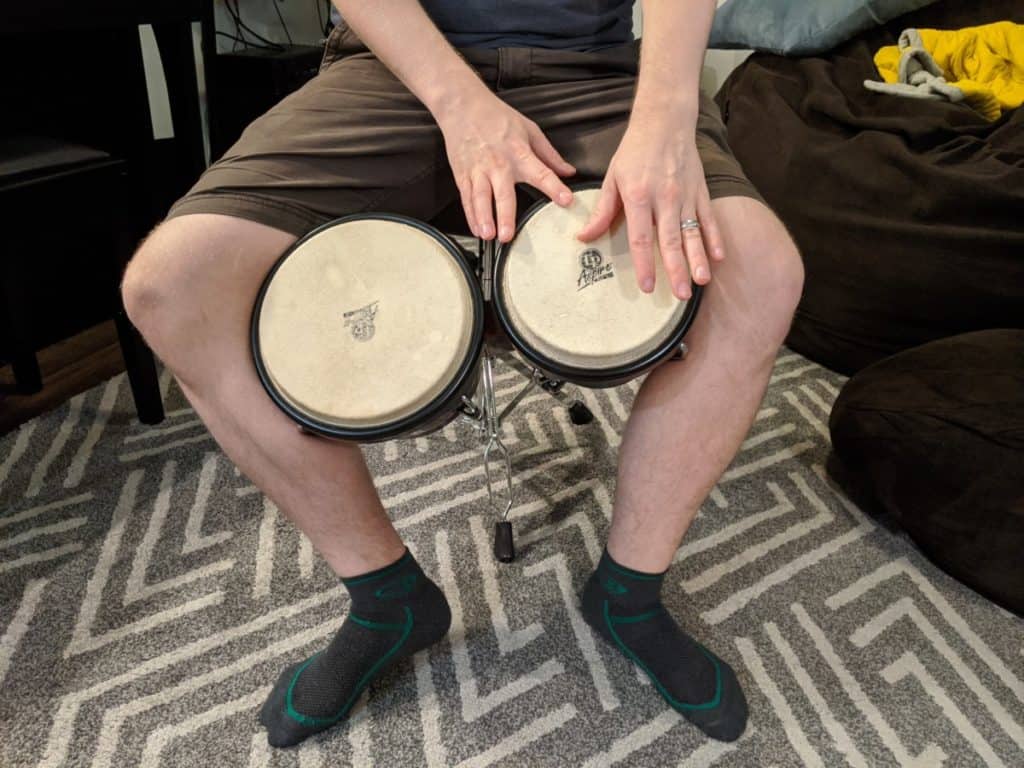
Bongo drums have a drum head that is attached to the skin of the drumhead and is pulled taut by 4 nuts attached by a metal hook on the opposite side of the drum.
Bongo drums *can* actually be played with sticks, click here if you want to learn more about that.
I made a tutorial to play the basics of Bongo drums which you can find here:
Conga Drums
Where you’ll find Bongo Drums, there’s a good chance you’ll find Conga drums as well.
Sometimes people mistake Conga Drums for “Big Bongo Drums”–actually, though, the Congas is a completely different hand drum and art form. The techniques to play are completely different. (You can see all the differences, here)
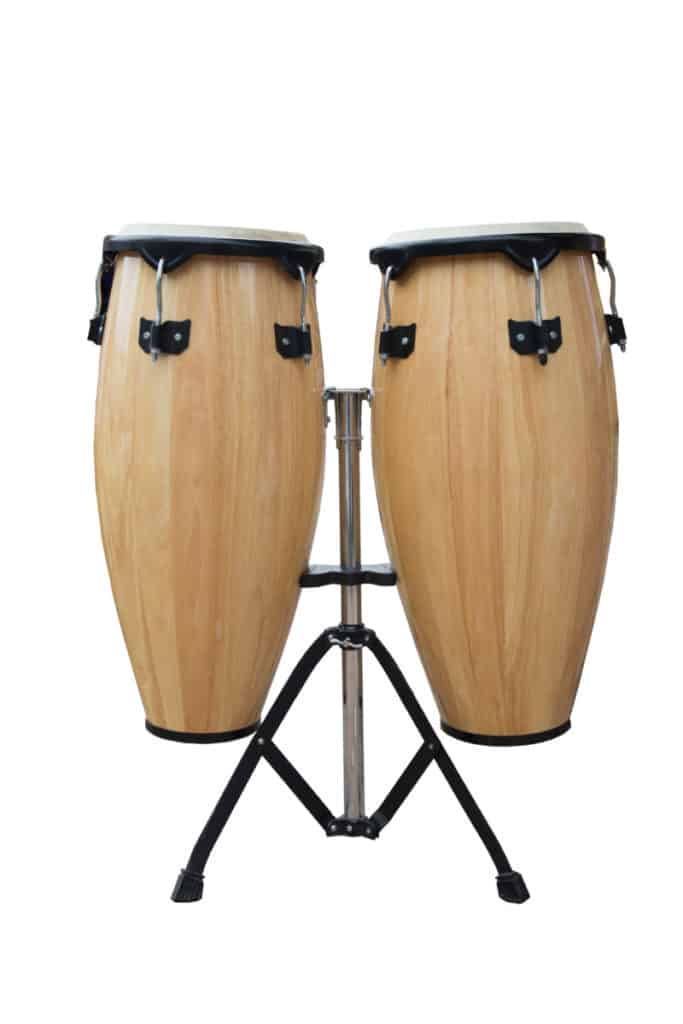
The congas are often played on a stand, so the bottom of the drum can project as much bass as possible. You can have one conga drum, two conga drums, or even more of different sizes to have more drum “voices” available to you.
Congas are similar to bongos where there are lugs pulling down on the drumhead which can be tightened or loosened, depending on what you need.
Djembe
A Djembe is a drum that is traditionally made from goat skin–it is a large, hourglass-shaped drum with a deep reverberating sound. A djembe is meant to be tipped to one side when played so that it projects a more bassy sound.
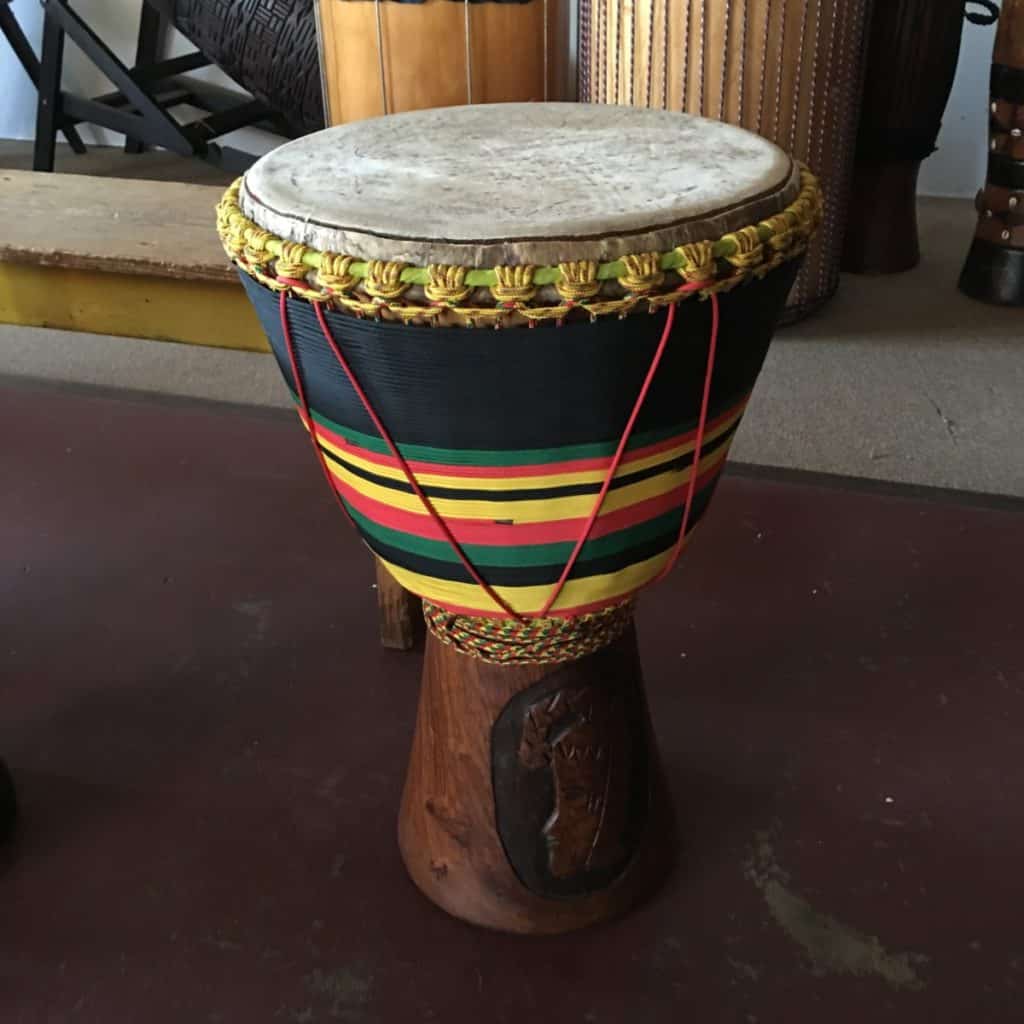
Djembes can be a composite material but are traditionally painstakingly handcrafted in countries in West Africa (source).
The djembe has a huge amount of sounds that can be achieved by various slapping techniques. Even pivoting the drum to change its projection can also change its sound.
Tabla
Tabla drums are traditional hand drums from the Hindu tradition.
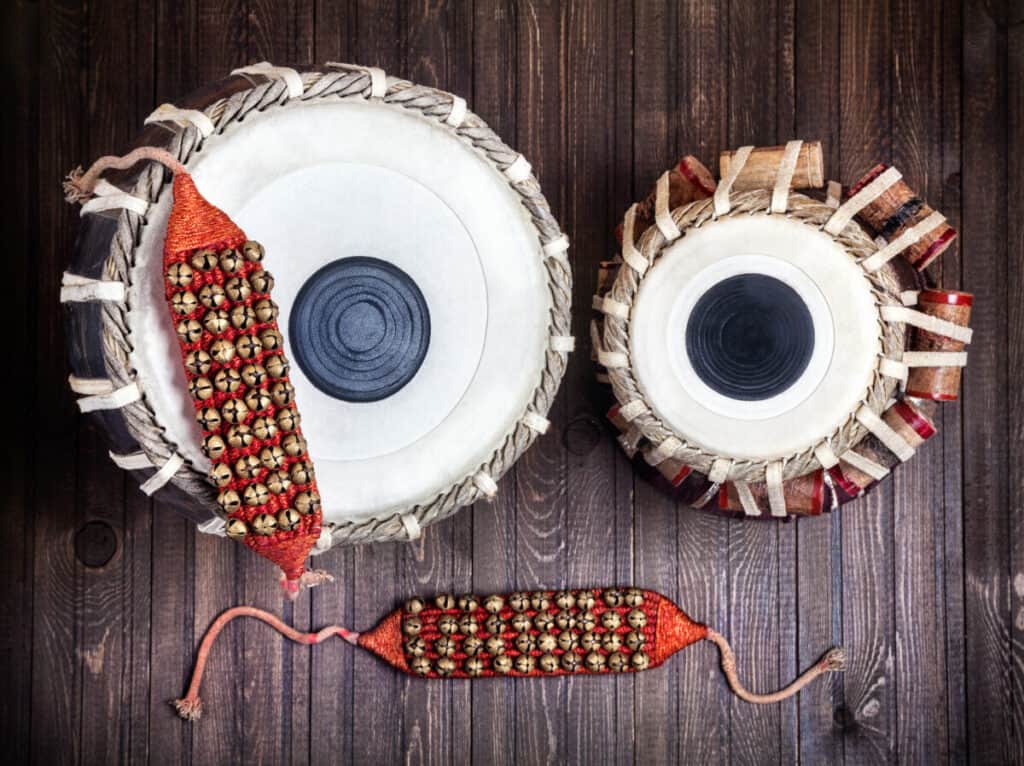
What makes the tabla special is that they are extremely resonant and have high sustain. Unlike other hand drums where the tone ends within a second of striking, Tabla can resonate for several seconds.
You can see an excellent demonstration, here:
Tambourine
The Tambourine comes in a bunch of different designs. Sometimes the tambourine has a drumhead with “bells” attached to the sides of the frame to make the tambourine jingling sound we’re all familiar with. However, sometimes there is no drumhead at all.
Either way, you shake the tambourine with your hands (or sometimes you kick it or whack it with a drumstick depending on whether you’re playing another instrument)
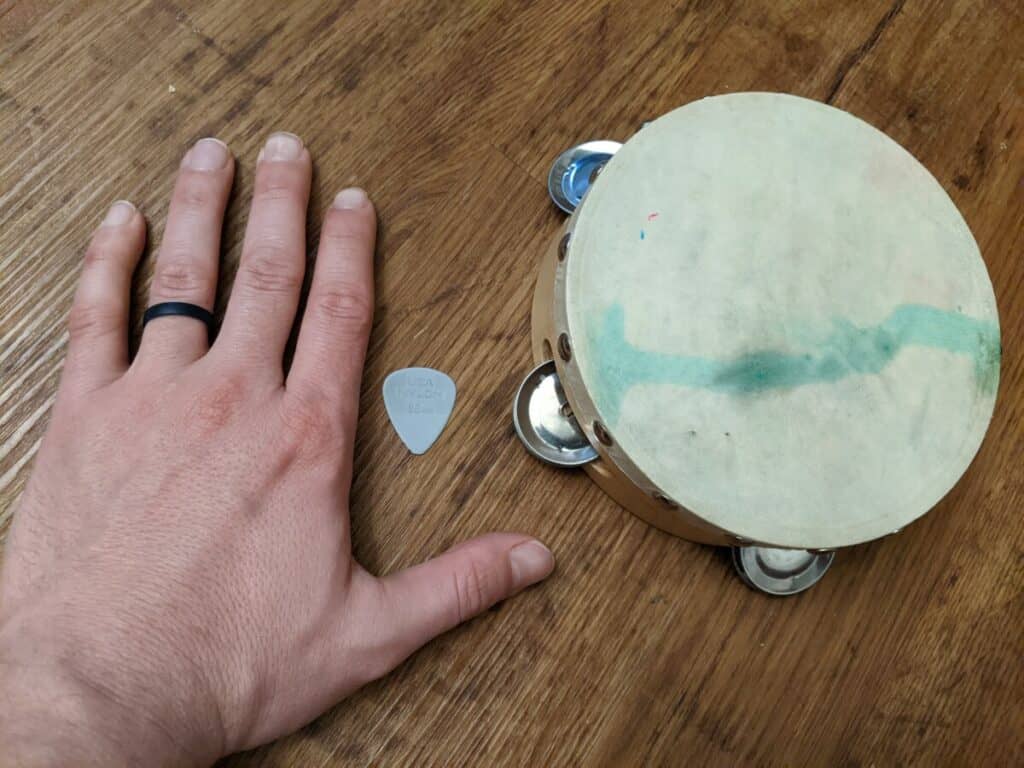
Handpan
The mystical handpan is actually a very modern instrument, only really being developed and catching on within the last 20 years. It’s the same premise as a steel drum, except the surface is convex (with concave indentations for the different notes. Sometimes there are convex indentation as well), and it’s designed to be played with your hands rather than with mallets.
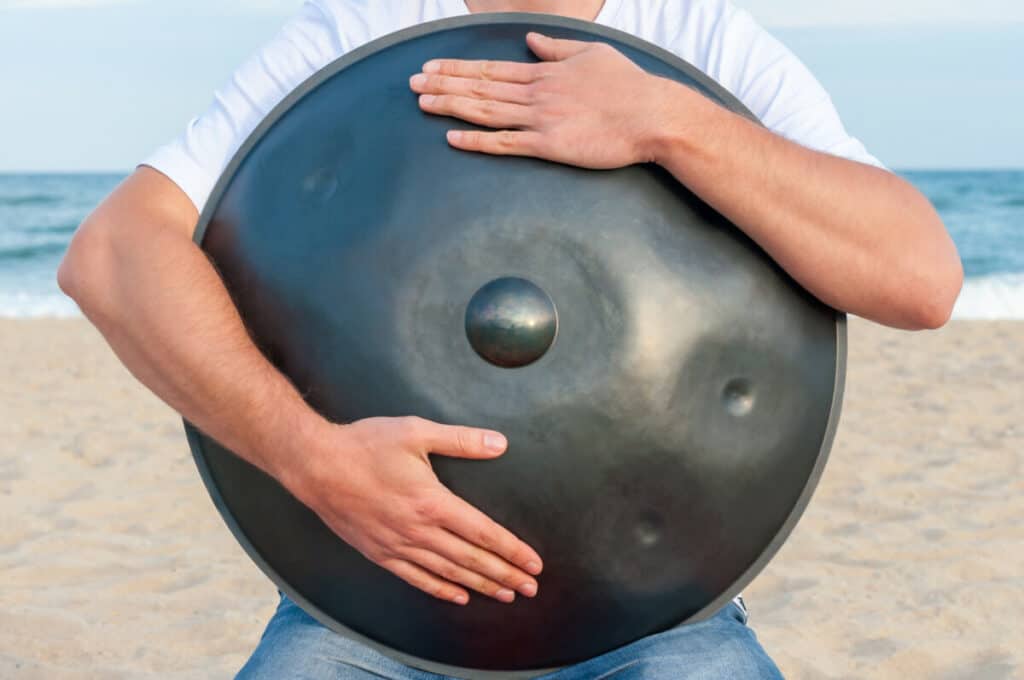
The handpan comes in thousands of different tunings and they are remarkable at creating a mystical, sad, haunting vibe.
That same vibe can be turned into pure serenity, depending on the player and the scale the handpan is tuned to.
Here is one of my favorite players:
Pianos and Piano-Like Instruments
The principle of the piano is simple, you use your fingers to push a key which then triggers a hammer striking a string. It’s a fairly technological instrument! The player is actually fairly removed from what is actually making the sound–I’m considering it a hand instrument though since you need no other objects to make the sound–just your hands and the instrument.
Piano
The Piano is one of the world’s most popular instruments and is often the first instrument many people try to play. It’s fairly common for a piano to just be sitting out and about (hard to stow in your closet when you’re not using it).
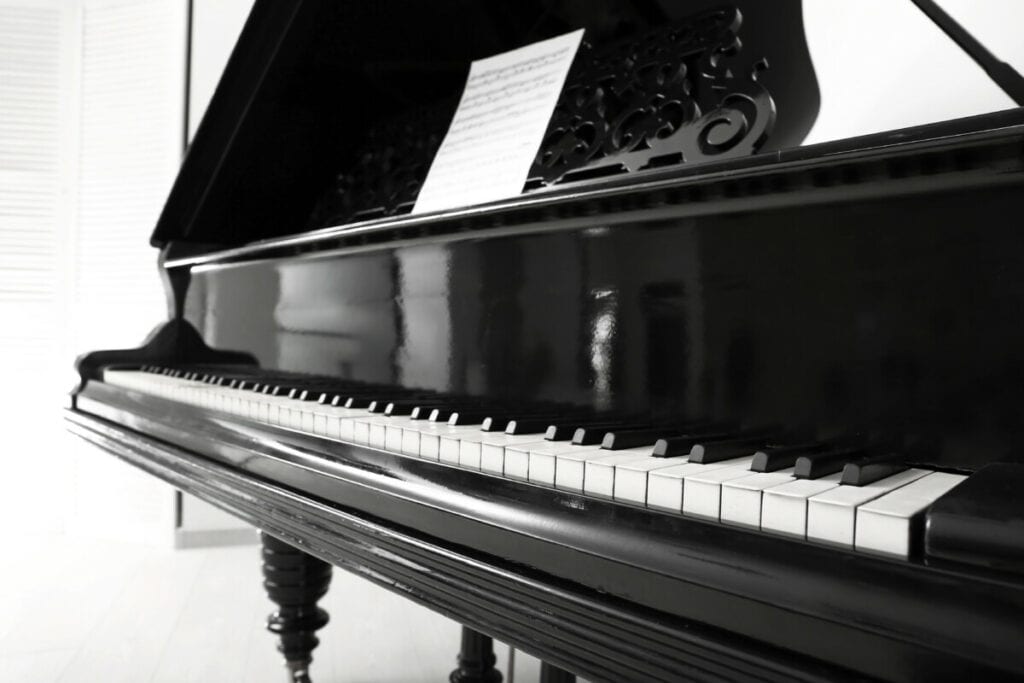
There are countless variants of the piano, you have the Grand Piano, a Baby Grand piano, the Upright Piano, and many sub-categories. The Piano has been around for several hundred years and is a staple in modern music, even today.
Concertina
The piano concept started with the harpsichord, but has continued to evolve, and the same concept of pressing-a-key-and-music-magically-being-made was carried to many types of instruments, like the Concertina.
The Concertina is really a glockenspiel (learn about glockenspiel here), wherein instead of strings, the hammers tap pieces of carefully tuned metal.
The concertina is a niche instrument, but is featured in some famous songs, like the dance of the Sugarplum fairies from The Nutcracker. You might hear it and recognize the famous Mr. Rogers TV show theme music as well.
Electric Organs
But the piano concept doesn’t stop there– piano keyboards are used for organs, as well. The traditional organs use pumped air through pipes to make the sound, but there are many digital organs where there is nothing else required to make the sound except pushing the keys:
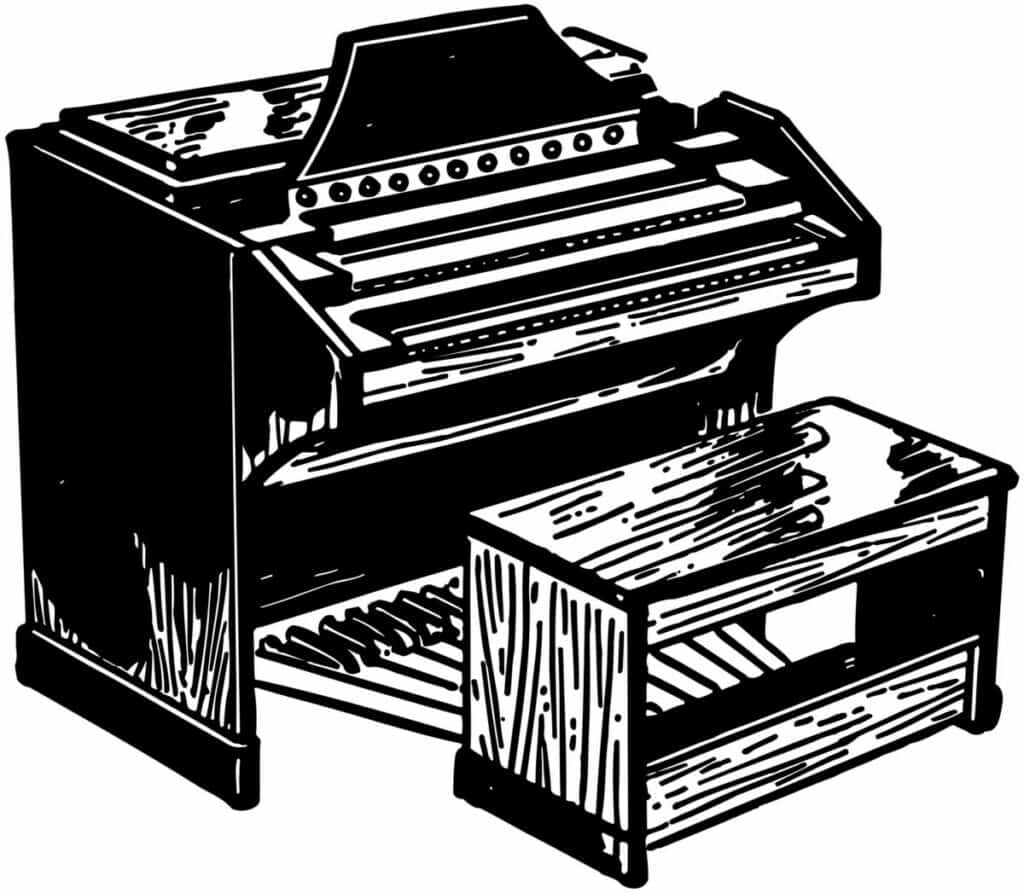
Electric organs were the precursors to the modern synthesizers that we’re more familiar with:
Electric Keyboards and Synthesizers
Nowadays, bands don’t lug a real piano onto the stage more often than not, instead, they’ll bring an electric keyboard/synthesizer onto the stage.
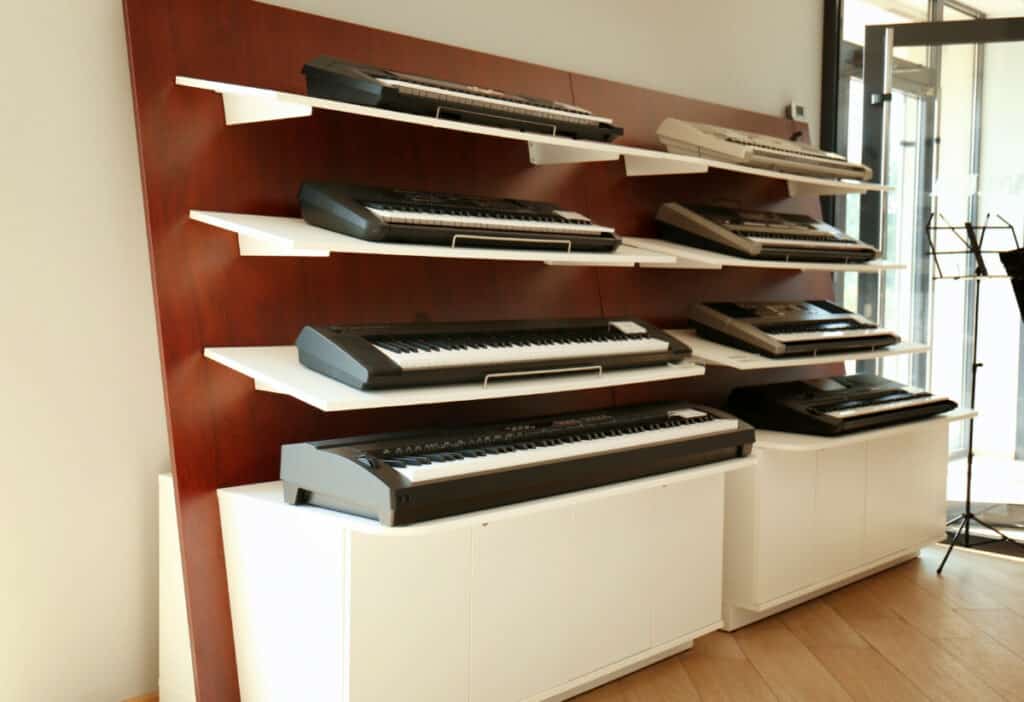
Since everything is electronic, the keyboard doesn’t have to make the sounds of the piano, but it can make the sound of any instrument that has been recorded and sampled or it can play pure synthesized tones.
Hand Plucked Instruments
This is a category of instruments all on its own. I’ll limit this discussion to the more common hand-plucked instruments that are directly played by your hands (not with a bow or other instrument).
Guitar
Maybe you didn’t think of this, but the guitar is a hand instrument! Although you can play with a pick to strike the strings, many players just strum with their fingernails, or pluck the strings individually “fingerpicking style”.
What can I say–the guitar may be the top contender for the world’s most popular instrument (that and the piano maybe).
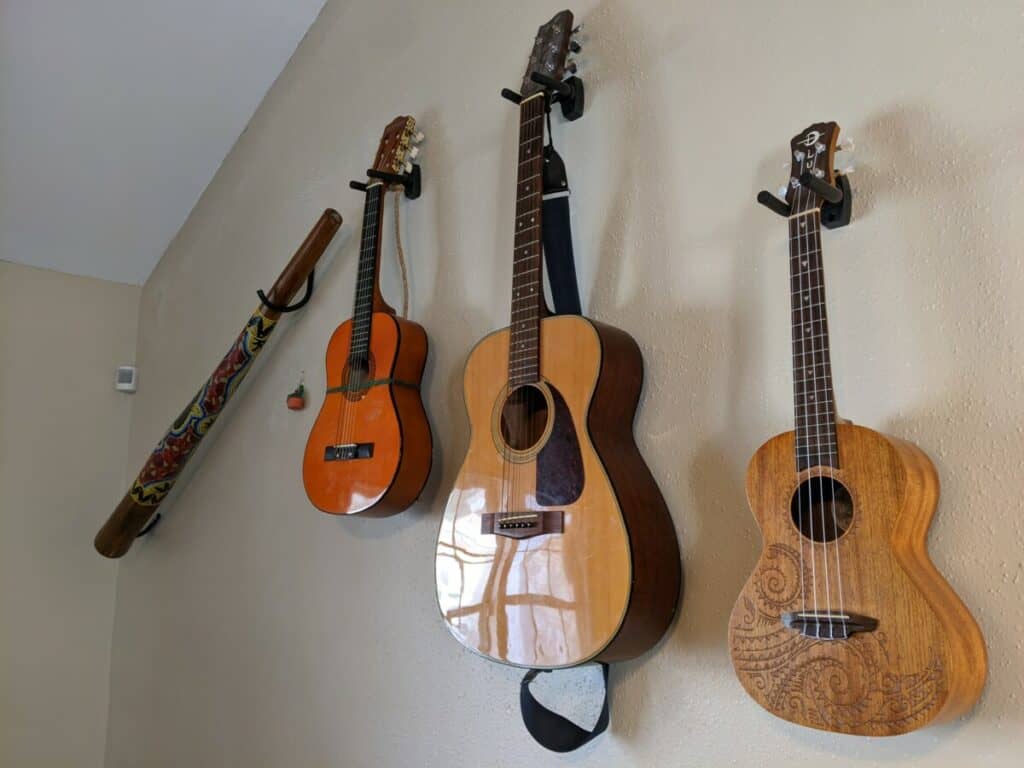
The 6 strings of the guitar are tensioned in such a way as to play specific pitches. As you master the guitar you can play a huge amount of sounds.
Besides the size of the instrument, there are countless different designs of the guitar, not to mention electric vs. acoustic vs. classical. (You can see the difference here at another post that talks about that)
Ever wondered how long it takes to learn the guitar? Make sure to check out my post here for more details.
Ukulele
No, the ukulele is not just a small guitar. Small guitars are a thing, but the ukulele is a different instrument.
The Ukulele has 4 strings, and unless you’re playing a baritone Ukulele has an interesting tuning quirk that’s very different from a guitar. The lowest-tuned note is actually the 2nd string.
The ukulele almost definitively has a sweet, mellow tone in comparison to a steel-stringed guitar.
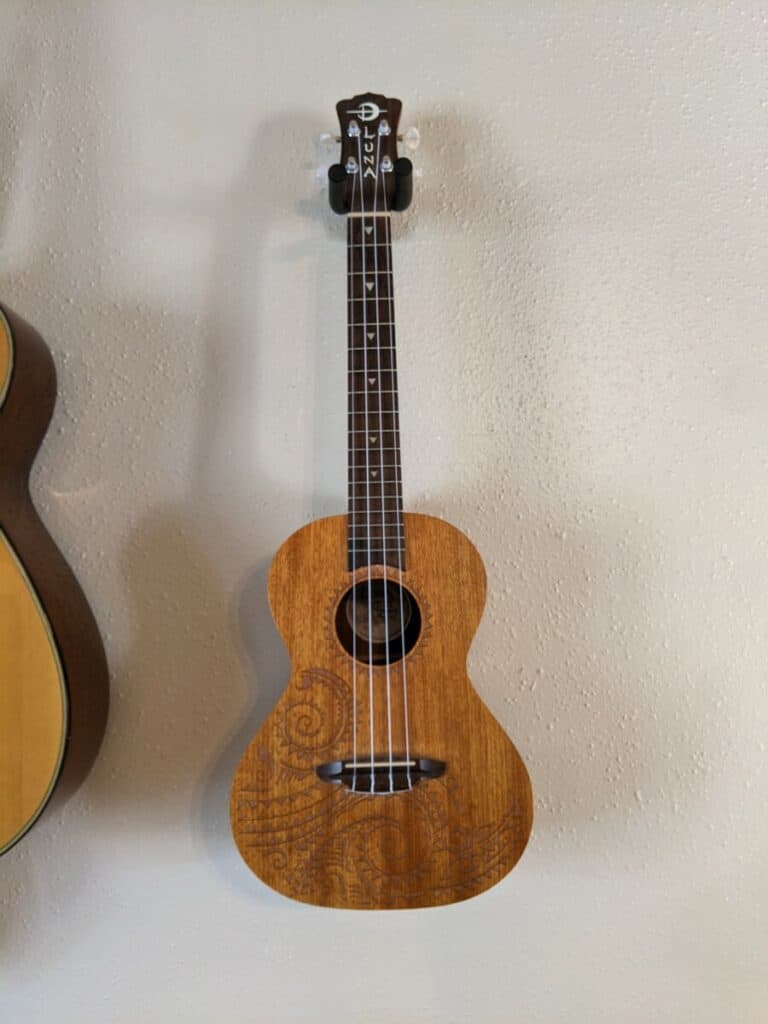
If you want to see a blow-by-blow comparison of the ukulele to the guitar, make sure and check out my post, here.
Harp
The harp and the hands are intimate–it’s one of the most beautiful things specific to humanity to see–the harpist has incredible coordination to be able to play these strings. Harpists have incredible callouses because this is not easy to do.
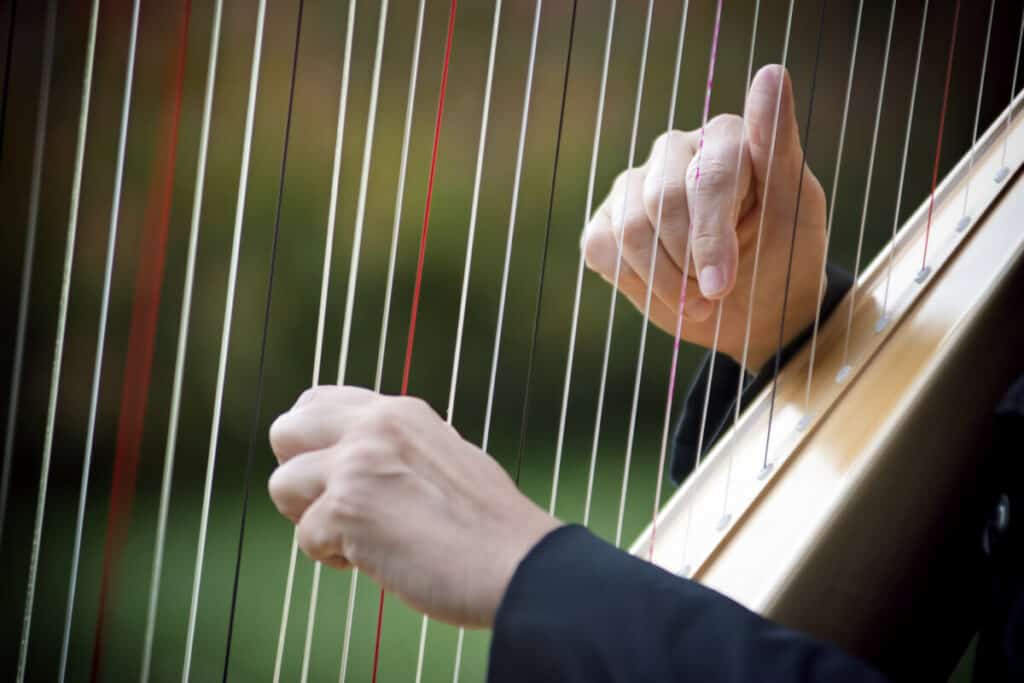
Harps come in all sorts of shapes and sizes. There is even a portable harp called a Lyre that you can still find! Here is one example on Amazon.
But there are some other harp-like instruments that can be played with your hands (or plucked with a plectrum):
Zithers
A zither sounds like a creature from a Dr. Suess book, but zithers have been around for much longer.
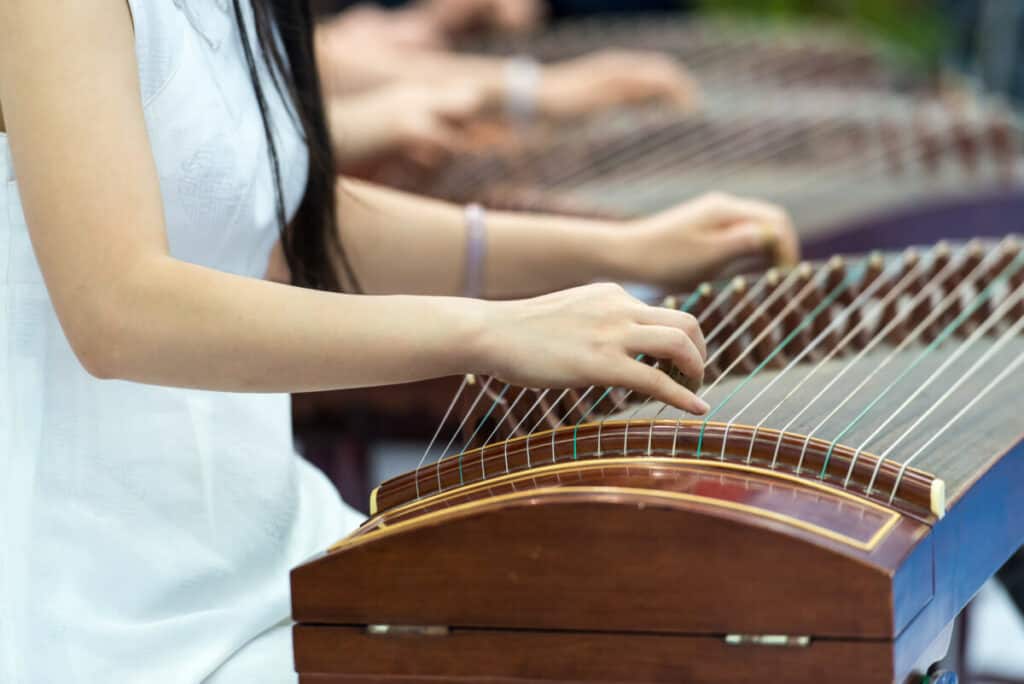
It’s likely you’ll never see two zithers exactly the same, there are thousands of varieties, but they all work similar to a harp where you have several taut strings that you pluck with your fingers or a plectrum (pick).
Sitar
The SItar is a beautiful instrument from India. It has incredible resonance and features many more strings than a standard 6-string guitar.
Most of these aren’t directly played by the player, however, they resonate and create overtones which makes the timbre of the sitar very complex and can differ from song to song. These strings are all tunable and therefore make it a fairly complicated instrument to set up.
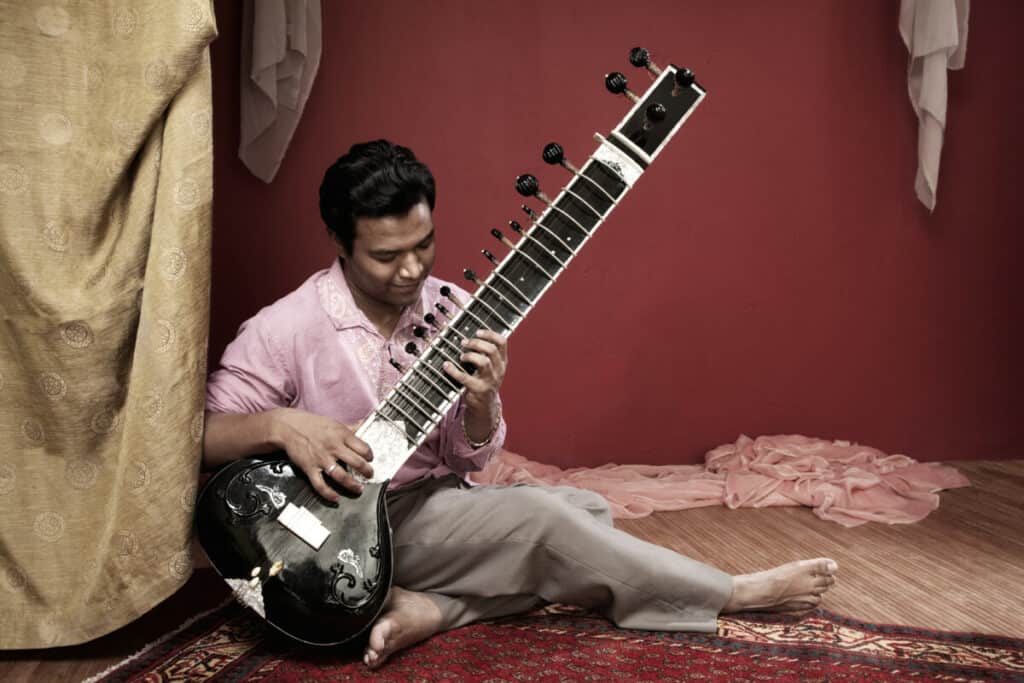
The SItar has made its way into Western Music styles, you can learn a lot more about its history in this article on Wikipedia.
There are literally hundreds of plucked stringed instruments, we’re only covering a few examples in this article. Let’s move on to a new type of hand instrument.
Hand Percussion Instruments
This is where we could go on for hours. There are so many different types of auxiliary percussion. So let’s jump in:
Cabasa
A cabasa makes its sound by scrapping metal beads against a washboard-like surface. It makes a delightful scraping sound that can add a lot to a song.
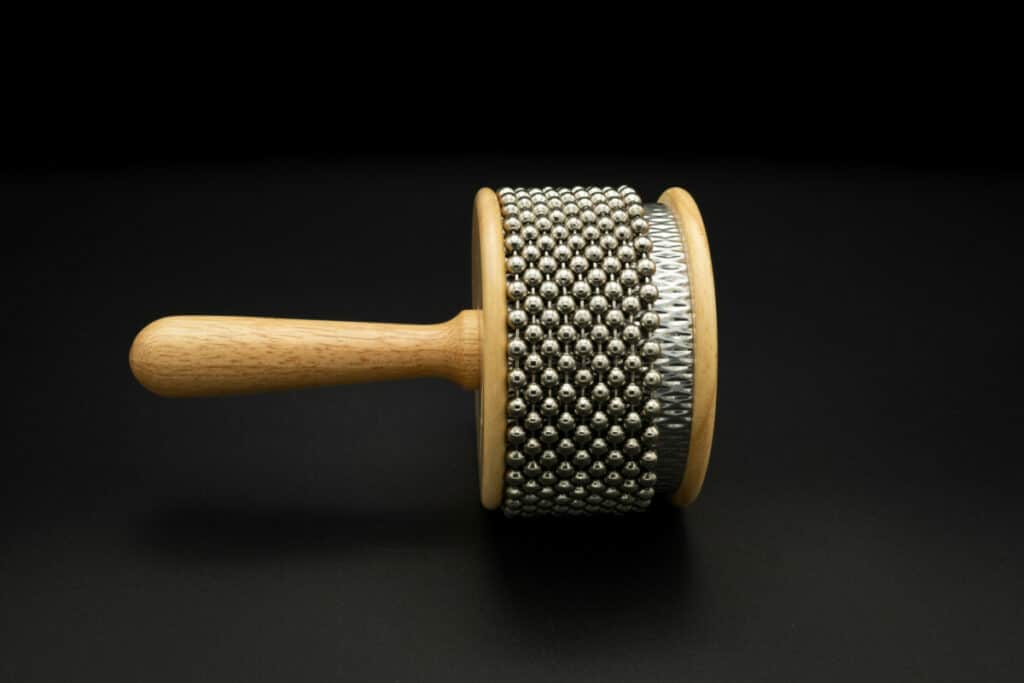
A cabasa is played by holding it by the handle in one hand, and then rotating that wrist while simultaneously holding the beads with your other hand. So it’s a lot like turning a door handle over and over and over and over and over again.
Shakers
This could be its own category. In away you could consider most tambourines shakers, but I’ve already talked about tambourines in this list. Let’s cover a few others.
Egg Shaker, Small Hand Shakers, Etc.
The egg shaker is a type of shaker that’s meant to fit in the palm of your head, conveniently shaped like an egg.
Don’t underestimate these shakers, they can add a really nice texture to your song.
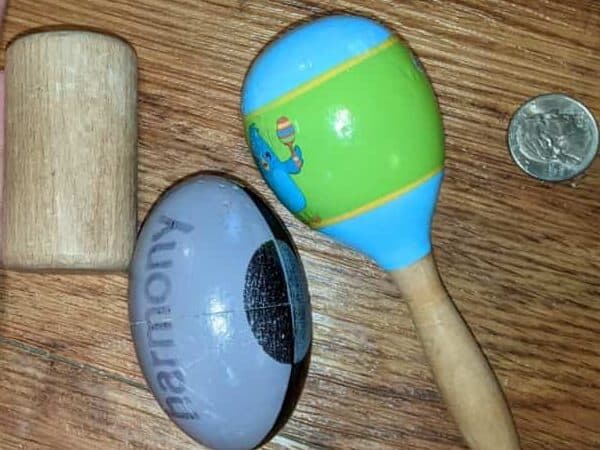
This egg shaker I’ve had for years and even though it was super cheap and not very high quality, it’s one of my favorite. It has a fantastic sound.
The other cylinder shaker is one I grabbed while I was in Venice, Italy.
Each shaker will vary as to its particular sound due to its shape and size, as well as the shape and size of the beads/legumes/grains inside. That’s why if you find a shaker you like, never lose it!
Maracas
Maracas come in pairs and are meant to be held together as they’re shaken. It seems like a super simple instrument, but believe it or not, there’s actually a huge amount of coordination to create the complex rhythms that the maracas can make.
Plus, try playing a consistent rhythm throughout an entire song, and you’ll appreciate how difficult it can be.
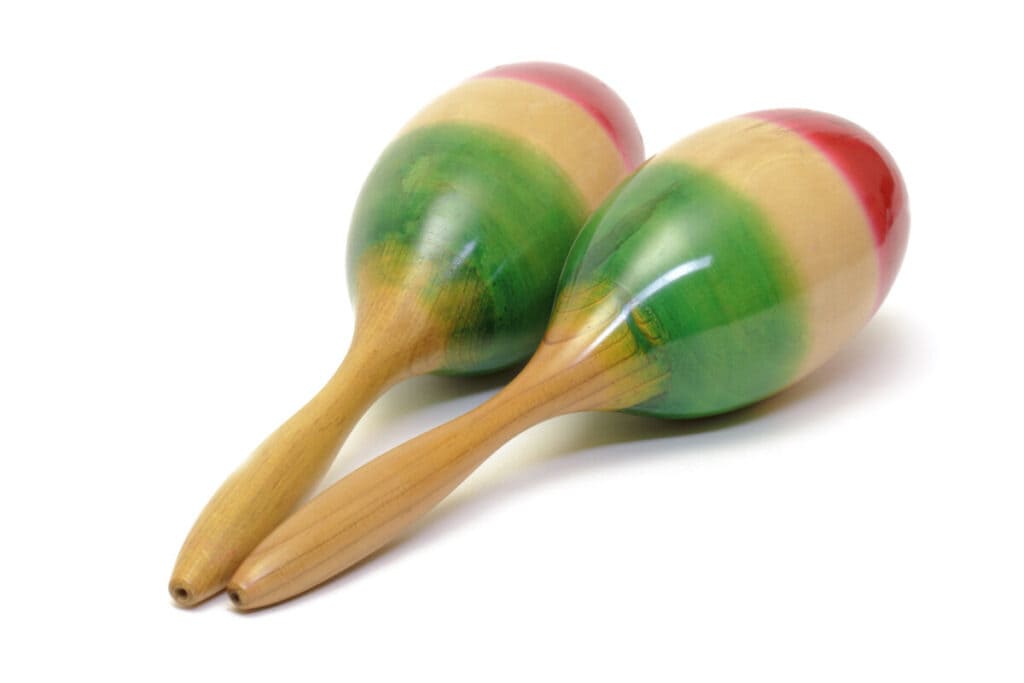
Bells
“Bells” come in all sorts of shapes and sizes. The idea is that you have a bunch of resonant cracked spheres with an object trapped inside which will make sound when shaken against the walls of the resonant sphere.
We have a couple toy bells, but you can find legit “sleigh bells” often like this:
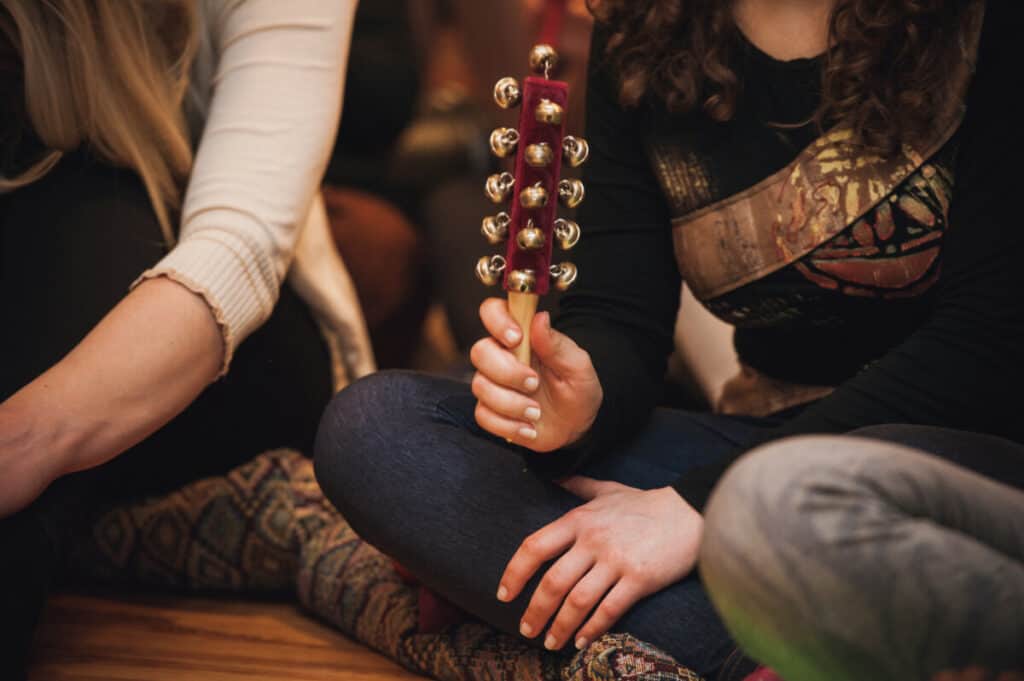
These are called sleigh bells because they’re an essential instrument in Christmas songs like “Sleigh ride”. But they can (tastefully) be used or a variety of songs and genres.
Other
It doesn’t stop there! There are so many other types of hand instruments, let me share with you just a few of them:
Hand Cymbals
These are unique in that you make the sound of the crashing cymbal by smashing two pieces of carefully shaped metal together. I can’t help but feel sympathetic for the player’s ears.
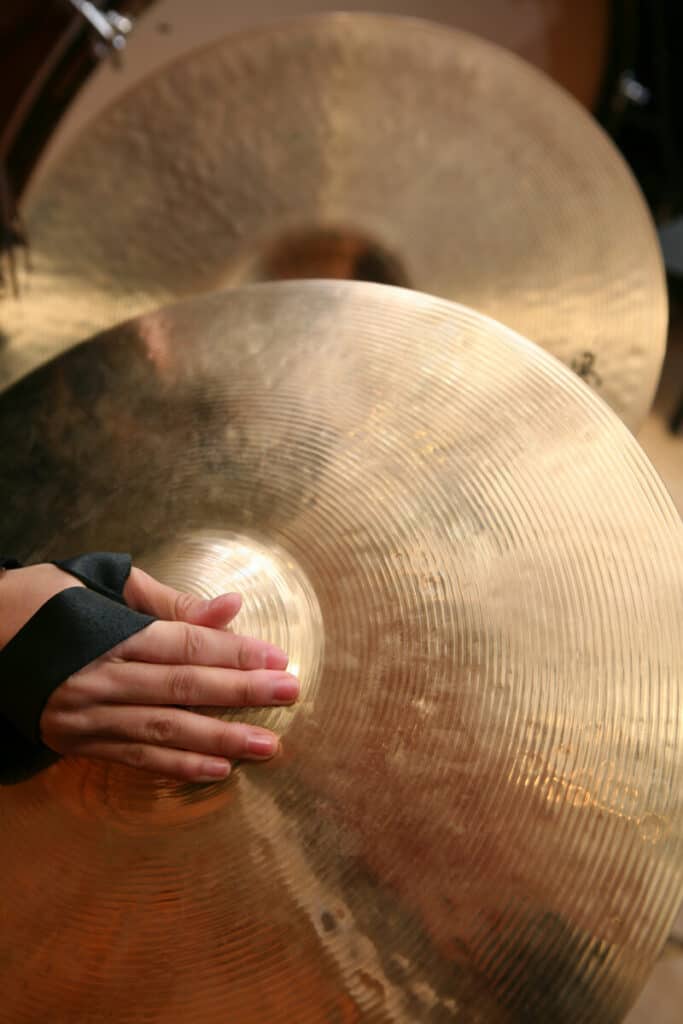
Hand cymbals are an essential part of any marching band and are also used in many other types of music and ensembles.
Finger Cymbals
Finger cymbals work the same way as hand cymbals, but they’re much smaller.
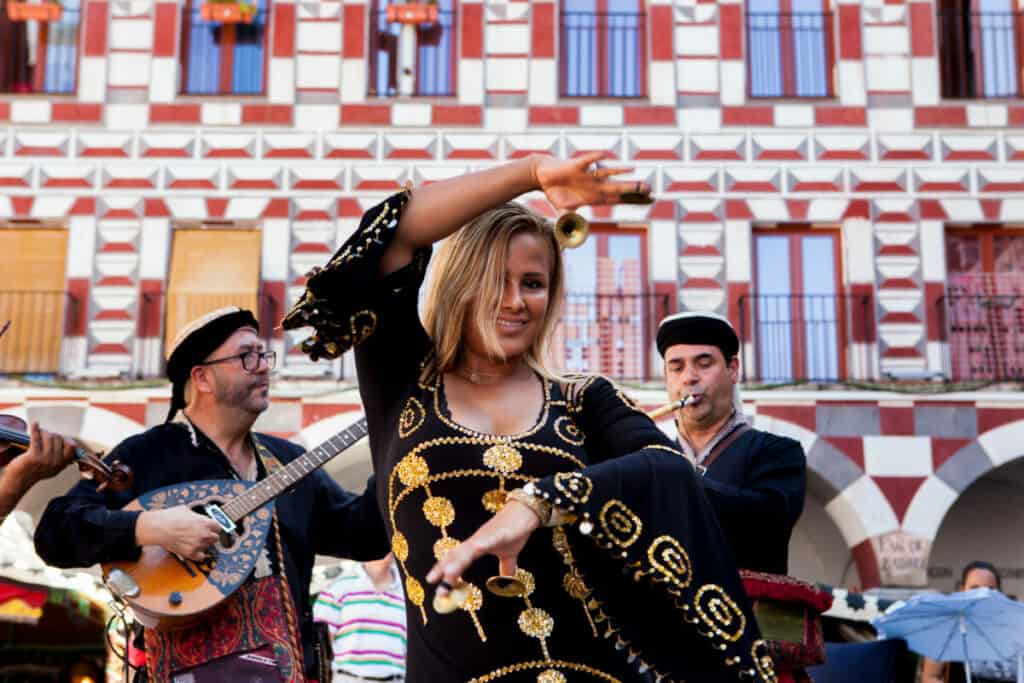
Finger cymbals make a high resonant tone, and because they’re so portable, they’re used in conjunction with some types of dancing.
Handbells
The handbell is exactly what it sounds like, a bell that you shake with your hand (or in this case you press a button) which moves the striker which in turn strikes the bell making that resonant bell tone that we’re all familiar with:
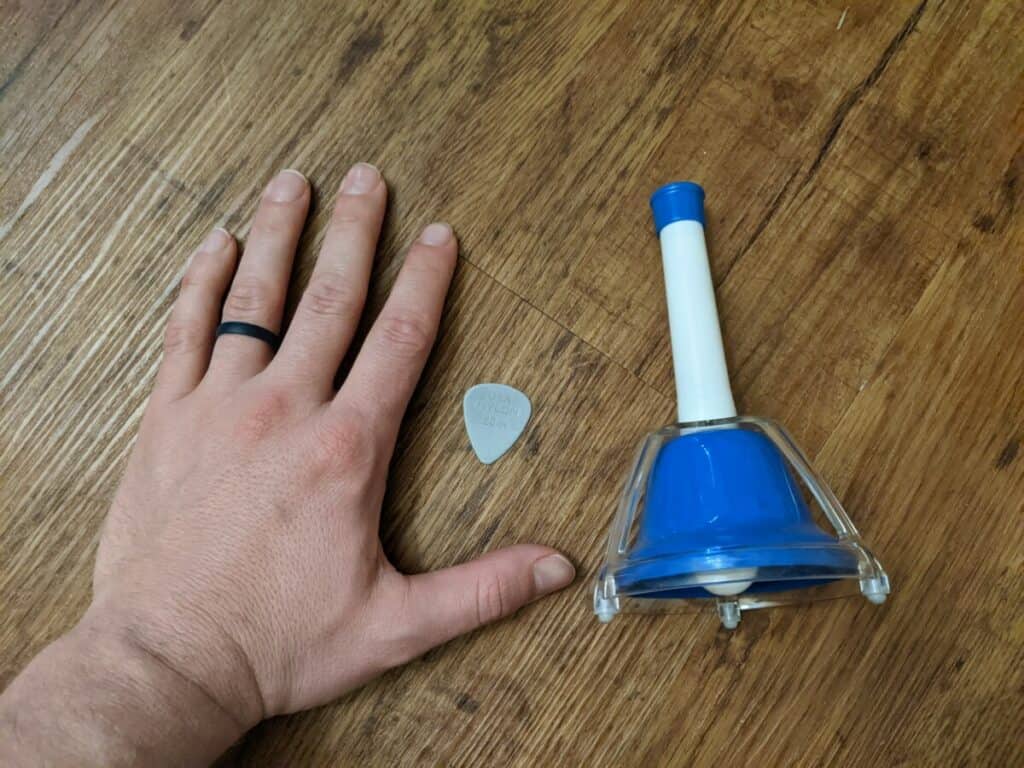
Theremin
This one might surprise you–but the theremin is a unique instrument because although it is essentially a synthesizer, the synthesizer is controlled by electromagnetic interferences caused by your hands.
The theremin is actually similar to how an electric guitar works. The strings vibrate and cause electromagnetic interference, but in the case of the theremin, your hands make the interference.
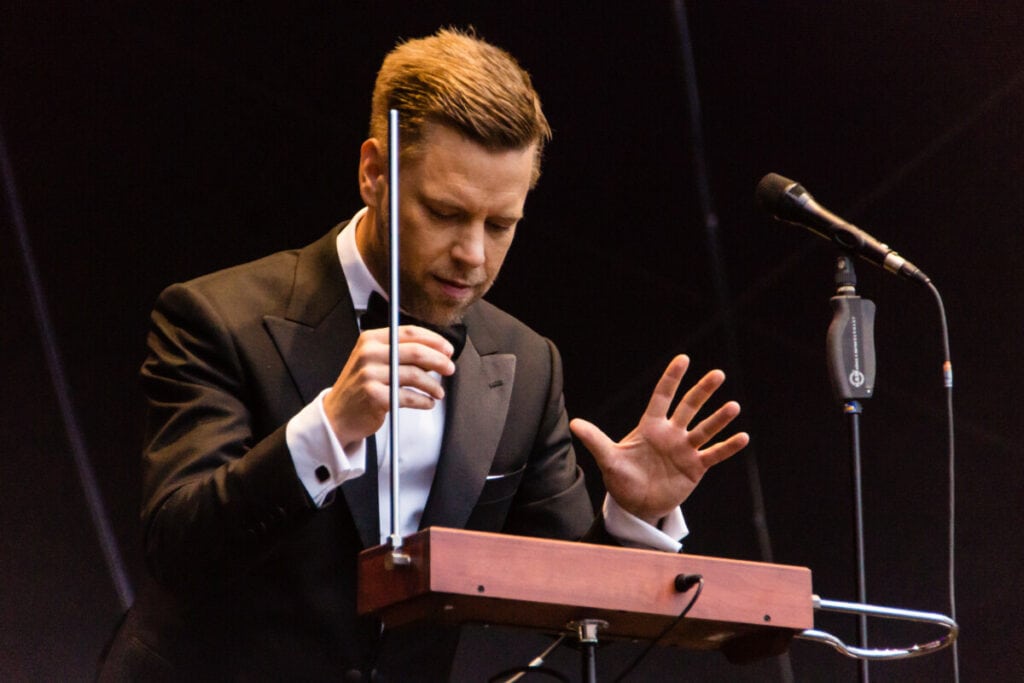
The theremin is actually the rectangle with the two antennas on both sides. The player moves their hands closer and further away from the antennas to change the pitch.
I love this demonstration of the theremin from Carolina Eyck:
Hurdy Gurdy
This instrument sounds like something totally made up, but no, it’s a legit instrument. And it’s older than you thought it could be. It was popular during the Renaissance (Wikipedia).
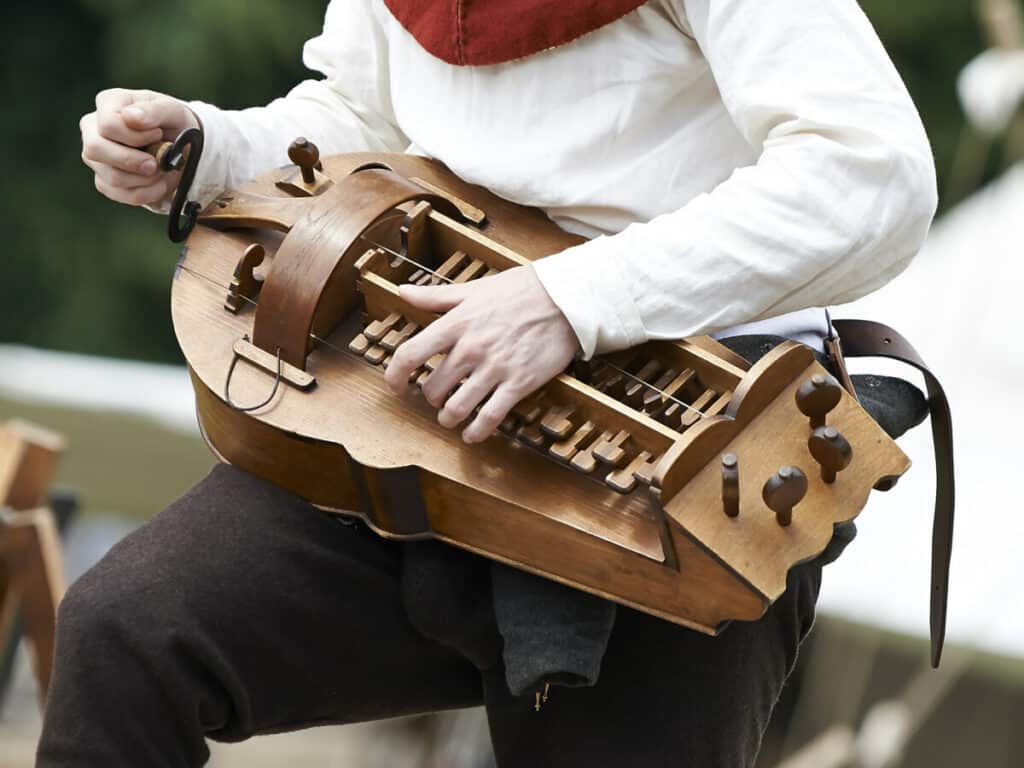
The Hurdy Gurdy is a mechanical violin, wherein the only thing the player has to do is turn a crank and the instrument plays itself while the player changes the pitches by playing different keys.
This odd combination results in a sound only the Hurdy Gurdy can make.
You’re probably curious, you can see an example of a legit Hurdy Gurdy player here:
